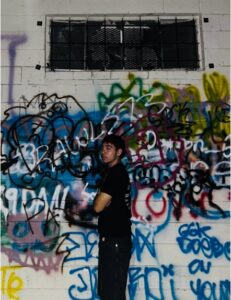Research on early Documentary Photographers

Documentary photography is a term that describes the process of telling a true story through the process of photography and writing. Although it can be done just using photos if they are strong and impactful enough. Being a documentary photographer meant going into places that most people were not familiar with and capturing images that would change the perspectives of the viewer. In turn this would hopefully bring some sort of change whether it was physical, social, or political. That has been its goal ever since its invention in the 1850’s in Britain. They used photography to capture images of archaeological dig sites and finds from all across the world or mainly places which they had colonial influences. 1860’s for Americans it was used a little differently. I say that because it was this time period where photographers were able to capture images of the civil war. It gave the American people a different perspective as they were able to see the faces of the men who were fighting this war that was brother vs brother. Since then it has been used in many ways before modern technology such as video and sound made photography not the fanciest tool in the box. Although the power of being able to capture a moment of time can resígnate with almost anyone who views it if impactful enough.
One of the very first documentary photographers was a man named Lewis Hines. Hines was a school teacher who worked part time at a newspaper. Some of his notable early work is his work in 1904 when he would station himself at Ellis island where thousands of immigrants would come into the United states. He took note of the conditions these immigrants were left with and he saw the impact his photographs had in changing their living conditions. In 1908 Hine’s was hired by the National Child Labor Committee as a photographer and his job was to try and get photographs of children doing crazy jobs as part of cheap labor for many factories. Child labor was a common practice during the industrial boom of the late 1800’s and early
1900’s. As many factory owners knew their practices were illegal they would try and keep the news and press out. Lewis was good at his job and had many ways of getting into the factories with a camera without the factory owners knowing, He would sneak into factories disguised as a
health inspector or pest control. Although some owners would catch on quick he would usually have enough time to get in and snap a photograph. His work with the National Child Labor Committee had some negatives though. Many death threats were sent Hines way as many business owners thought that we were infringing on their way of business. When the first world war began in 1914 Lewis became a photographer for the Red cross and documented their efforts up until 1930’s when he was hired to document the construction of the Empire state building in New York, New York. After his work there he went back to the red cross during the great depression. He died at the age of 66 after a rough last few years. He was a trailblazer for journalists everywhere because he did what it took to get the job done. It may seem unethical but I remind you he was only tricking businessmen who were taking advantage of child workers and in turn protected children.
Documerica was a program in 1971 that allowed for Americans from across the country to send in photos concerning the American landscape in pollution. It was created due to By the end of the project it accumulated over 20,000 photos from across the nation. It was funded by the EPA (Environmental Protection Agency) . It was closed down after it became too much for a young EPA to handle so they closed the program. The photos were used to justify change in laws and policies regarding the environment.
Nowadays documentary photography can be published anywhere due to the internet. Although you will find most of the most historical or factual ones may be found on government or museum websites. The works of many great photographers can be found in national, state, and local libraries. Before such luxuries one would have to publish their works to a museum or a magazine/newspaper. If that didn’t work some journalists had the option to self publish but that was not an option that was given to everyone The subject manner of many of the documentaries can be found in everyday life but only few kindred souls have what it takes to capture and curate stories to tell meaningful and impactful stories.





